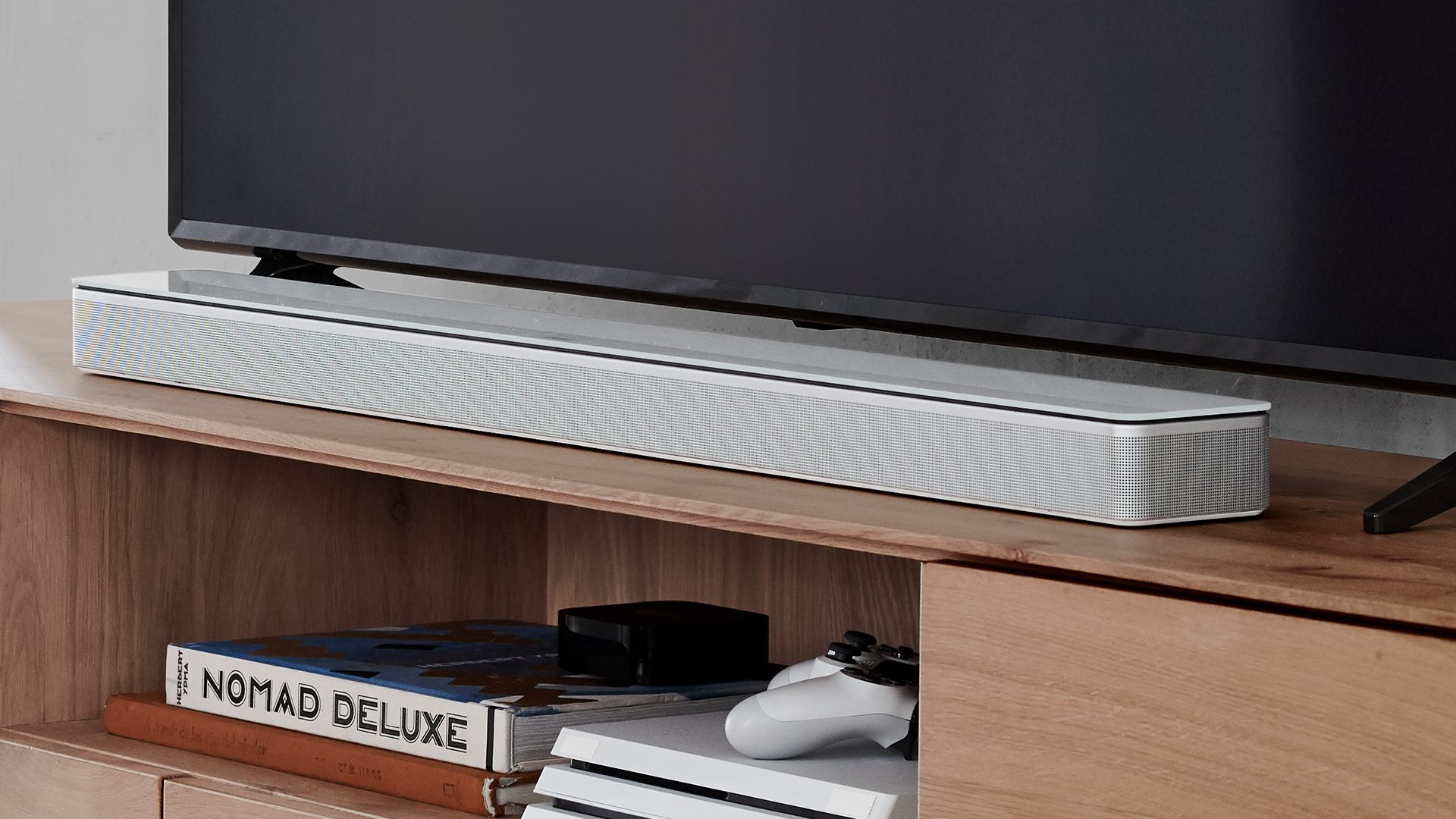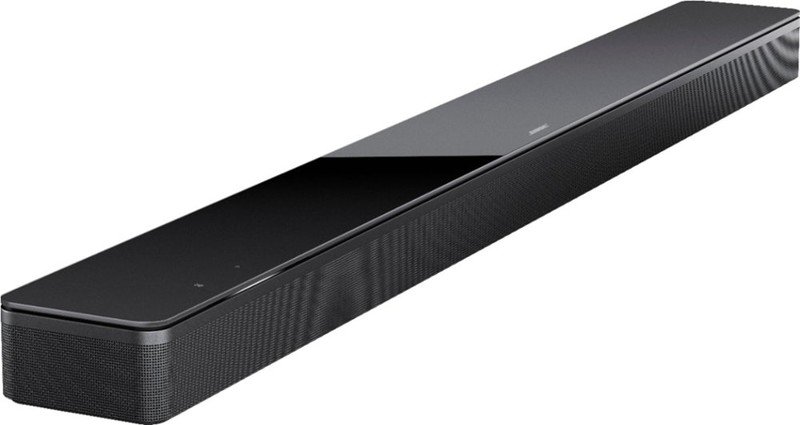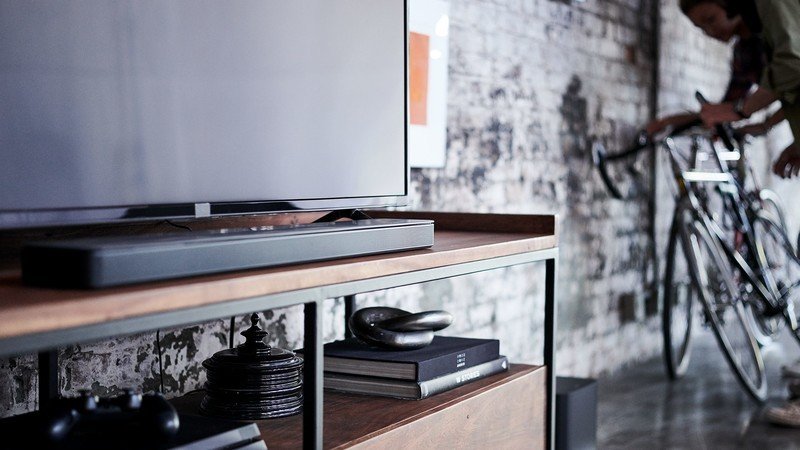Bose Soundbar 700 vs. Soundbar 500: Which should you buy?

Bose Soundbar 700

The Bose Soundbar 700 takes advantage of a larger build to fit in four mid-range drivers and a tweeter, creating impressive front-facing sound. Many of its standout features, from Alexa / Google Assistant voice commands to eARC support, can also be found in the 500, and it's a fair critique that most soundbars in this price range come bundled with a subwoofer.
Bose Soundbar 700
Better audio, shinier finish
Bose Soundbar 500

The 500 shares its counterpart's voice assistant support and connectivity options at a lower price point, though the lower cost and smaller frame translates to slightly less rich sound quality. Improving the sound quality by purchasing the optional Bose subwoofer and dual speakers will cost you an arm and a leg, and the lack of DTS support is a disappointment.
Bose Soundbar 500
More affordable, same features
Despite a significant price difference, Bose's two top soundbars come with the same audio channels, assistants and connectivity, as well as a similar design and nearly identical support for audio formats and apps. They also share some of the same weaknesses, including the optional (and expensive) subwoofer and discrete speakers. The primary differences between the 700 and 500 come down to the 700's improved sound quality, larger, glossier build, and a more advanced remote control.
Let's start with the similarities

Bose deserves credit for not following the industry trend of reserving cool features only for its most expensive speaker. Instead, many cutting-edge perks are supported in both devices.
Both the 500 and 700 have built-in voice command support for Alexa and Google Assistant, as well as Apple AirPlay 2 — though neither have built-in Chromecast, as many other soundbars do nowadays. Either device can connect via Wi-Fi, Bluetooth 4.2, Ethernet, optical, or a single HDMI input for either ARC or, impressively, eARC. Also, both devices feature Adaptiq mics that calibrate the size of your room and adjust the sound accordingly.
Both soundbars have far more in common than you'd expect, given their price difference.
Via Wi-Fi or AirPlay, both devices natively stream Spotify, Pandora, TuneIn, iHeartRadio, Amazon Music, SiriusXM, Deeze and Apple Music. With either device you can use Bose SimpleSync and Bluetooth to stream music or TV audio directly to your personal headphones.
In terms of specs, both speakers feature a simple 3.0 layout, with no separate subwoofer or upward-firing speakers to speak of. Both devices use built-in "QuietPort" tech for its bass, which delivers cleaner bass with less distortion but also won't reach the same sound or power as a subwoofer.
Get the latest news from Android Central, your trusted companion in the world of Android
Bose does allow you to purchase and pair discrete speakers and a subwoofer with either device to build a 3.1.2 configuration. However, Bose programmed them to only work with Bose Surround Speakers and either the Bose Bass Module 500 or 700. You can't link up your own non-Bose subwoofer to save money; so for proper bass or surround sound, things will get expensive regardless of which soundbar you choose.
| Header Cell - Column 0 | Bose Soundbar 700 | Bose Soundbar 500 |
|---|---|---|
| Size | 2.25" H x 38.5" W x 4.25" D | 1.75" H x 31.5" W x 4.0" D |
| Weight | 10.5 lbs | 7 lb. |
| Colors | Black, White | Black |
| Channels | 3.0 | 3.0 |
| Subwoofer | Separate purchase | Separate purchase |
| Discrete speakers | Separate purchase | Separate purchase |
| Built-in Google Assistant commands | Yes | Yes |
| Built-in Alexa commands | Yes | Yes |
| Built-in Chromecast | No | No |
| Wi-Fi Streaming | Yes | Yes |
| Bluetooth | Yes | Yes |
| HDMI ARC / eARC | 1 input | 1 input |
| Ethernet port | Yes | Yes |
| Optical port | Yes | Yes |
| Adaptiq Room Calibration | Value | Value |
| Dolby Digital | Yes | Yes |
| Dolby Atmos | No | No |
| DTS | Yes | No |
| DTS:X | No | No |
| Remote control | Universal Bluetooth remote | Basic IR remote |
A few key differences
The Bose Soundbar 700 sizes up at 2.25-by-38.5-by-4.25 inches and weighs 10.5 pounds, whereas its little sibling measures just 1.75-by-31.5-by-4 inches and weighs merely 7 pounds. Neither is particularly large or tall for a soundbar sitting in front of a TV, but a handful of users may prefer a narrower option if they need to fit it inside an entertainment center shelf.
The 700 has a far richer sound, though neither soundbar excels at bass without the optional subwoofer.
If you prefer your soundbar to make a visual statement, the 700 comes in arctic white as well as black, and has a shiny glass top; the 500 only has a black option with a matte top. Glass tends to be a magnet for grime and fingerprints, which means you'll need to put more effort into keeping it clean. Bose includes a cleaning cloth with purchase, but you'll probably need to invest in some non-damaging cleaning solution as well.
With its extra real estate, the 700 fits in four mid-range drivers, two on either side of a tweeter. The 500 includes three front-facing drivers and two side-facing drivers. The extra forward driver allows the 700 to have richer sound.
While you might assume the two side drivers would give the 500 an edge for surround sound, the 700 uses Bose's proprietary "PhaseGuide" transducers to direct sound in more directions than the 500 can hit. While both support Dolby Digital sound, only the 700 works with DTS as well.
Remotes matter less in a device with comprehensive voice commands, but the 700 does include a Bluetooth-enabled "Universal remote" with purchase, while the 500 comes with a smaller, basic IR remote. The universal remote has some neat features, letting you switch between music presets easily and lighting up specific buttons based on what mode the soundbar is in. It's compatible with the 500, if you're willing to shell out additional cash for it.
Which should you buy?
Both the 700 and 500 are great soundbars. On its own merits, it's safe to say the 700 is the superior choice due to its extra mid-range driver and PhaseGuide support. Both speakers map out your room with Adaptiq tech, but the 700 is better equipped to adjust its sound to accommodate your specific layout. Still, the 500 has solid forward-facing sound that works well enough for a mid-range soundbar, and has virtually the same easy setup and ease-of-use features as its more expensive counterpart.
Consider whether or not you want to augment your soundbar with its expensive accessories, or if you're fine with it as an all-in-one solution. Mediocre bass is the weak point for both soundbars, so if you were to purchase the 500 soundbar and 500 Bose subwoofer, you'll be spending close to $1,000, which isn't too expensive compared to the 700. At the price you'll get for the 700 and the extras, you can purchase an excellent Dolby Atmos-compatible soundbar package instead.
Unless you're particularly passionate about the DTS audio format or white soundbars, we feel that neither soundbar offers any major downsides compared to the other, and you can safely choose one or the other based on your budget.

Stands strong on its own
Strong sound performance and an impressive array of features makes this a great soundbar for buyers that don't want to deal with a family of speakers. Still, in this range you can typically find other soundbars with subwoofers or Dolby Atmos / DTS:X support, so you're really paying for a convenient, voice-commandable device over other, more complicated setups.

More reasonably priced for what it offers
At a more reasonable price for a 3.0 soundbar, the 500 offers everything a casual user could need, from excellent voice command support to access to most music services. Its sound quality doesn't live up to the 700 but certainly provides a solid option for anyone not looking for surround sound or Atmos. It's also a good choice for those looking to purchase other expensive Bose accessories for a more complete sound system.

Michael is Android Central's resident expert on wearables and fitness. Before joining Android Central, he freelanced for years at Techradar, Wareable, Windows Central, and Digital Trends. Channeling his love of running, he established himself as an expert on fitness watches, testing and reviewing models from Garmin, Fitbit, Samsung, Apple, COROS, Polar, Amazfit, Suunto, and more.
